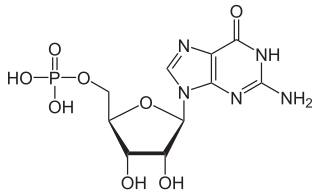
Bovril is a thick and salty meat extract paste, similar to a yeast extract, developed in the 1870s by John Lawson Johnston. It is sold in a distinctive bulbous jar and as cubes and granules. Its appearance is similar to the British Marmite and its Australian equivalent Vegemite. Bovril is owned and distributed by Unilever UK.

A flavoring, also known as flavor or flavorant, is a food additive used to improve the taste or smell of food. It changes the perceptual impression of food as determined primarily by the chemoreceptors of the gustatory and olfactory systems. Along with additives, other components like sugars determine the taste of food.

Marmite ( MAR-myte) is a British savoury food spread based on yeast extract, invented by the German scientist Justus von Liebig. It is made from by-products of beer brewing (lees) and is produced by the British company Unilever. Marmite is a vegan source of B vitamins, including supplemental vitamin B12. A traditional method of use is to spread it very thinly on buttered toast.

Vegemite is a thick, dark brown Australian food spread made from leftover brewers' yeast extract with various vegetable and spice additives. It was developed by Cyril Callister in Melbourne, Victoria for the Fred Walker Company in 1922, and it was first sold in stores on 25 October 1923.

Yeasts are eukaryotic, single-celled microorganisms classified as members of the fungus kingdom. The first yeast originated hundreds of millions of years ago, and at least 1,500 species are currently recognized. They are estimated to constitute 1% of all described fungal species.

Monosodium glutamate (MSG), also known as sodium glutamate, is a sodium salt of glutamic acid. MSG is found naturally in some foods including tomatoes and cheese in this glutamic acid form. MSG is used in cooking as a flavor enhancer with a savory taste that intensifies the umami flavor of food, as naturally occurring glutamate does in foods such as stews and meat soups.

Umami, or savoriness, is one of the five basic tastes. It is characteristic of broths and cooked meats.

Cenovis is a dark brown food paste from Switzerland consisting of yeast extract, onions, carrots and spices. Sold internationally under the brand Sonaris, it is similar to English Marmite, Brazilian Cenovit, and Australian Vegemite. It is rich in vitamin B1. It is used to flavour soups, sausages, and salads. The most popular way to consume Cenovis, however, is to spread it on a slice of buttered bread, as stated on the product's packaging (it can also be blended directly into butter, and then spread on bread, or used as a filling in croissants and buns).

Disodium inosinate (E631) is the disodium salt of inosinic acid with the chemical formula C10H11N4Na2O8P. It is used as a food additive and often found in instant noodles, potato chips, and a variety of other snacks.

A meat alternative or meat substitute, is a food product made from vegetarian or vegan ingredients, eaten as a replacement for meat. Meat alternatives typically approximate qualities of specific types of meat, such as mouthfeel, flavor, appearance, or chemical characteristics. Plant- and fungus-based substitutes are frequently made with soy, but may also be made from wheat gluten as in seitan, pea protein as in the Beyond Burger, or mycoprotein as in Quorn. Alternative protein foods can also be made by precision fermentation, where single cell organisms such as yeast produce specific proteins using a carbon source; as well as cultivated or laboratory grown, based on tissue engineering techniques. The ingredients of meat alternative include 50–80% water, 10–25% textured vegetable proteins, 4–20% non-textured proteins, 0–15% fat and oil, 3-10% flavors/spices, 1-5% binding agents and 0-0.5% coloring agents.

Promite is a dark brown, salty food paste derived from yeast extract. It is primarily used as a spread on sandwiches and toast similar to Vegemite and Marmite. Promite was invented in the 1950s by Henry Lewis & Company and marketed under the Masterfoods brand. Henry Lewis & Company later became MasterFoods Australia and New Zealand, before being bought out by Mars, Incorporated, a privately owned U.S. company, in 1967. Promite has continued to be manufactured and primarily sold in Australia.

Nutritional yeast is a deactivated yeast, often a strain of Saccharomyces cerevisiae, that is sold commercially as a food product. It is sold in the form of yellow flakes, granules, or powder, and may be found in the bulk aisle of natural food stores. It is used in vegan and vegetarian cooking as an ingredient in recipes or as a condiment.

Guanosine monophosphate (GMP), also known as 5′-guanidylic acid or guanylic acid, is a nucleotide that is used as a monomer in RNA. It is an ester of phosphoric acid with the nucleoside guanosine. GMP consists of the phosphate group, the pentose sugar ribose, and the nucleobase guanine; hence it is a ribonucleotide monophosphate. Guanosine monophosphate is commercially produced by microbial fermentation.
In biology, autolysis, more commonly known as self-digestion, refers to the destruction of a cell through the action of its own enzymes. It may also refer to the digestion of an enzyme by another molecule of the same enzyme.
Guinness Yeast Extract, commonly known by its initials GYE, was an Irish savoury spread, made from yeast extract. It was a by-product of the Guinness beer brewing process and produced by Arthur Guinness Son & Co., Dublin. The product was launched in Ireland on 2 November, 1936 and discontinued in 1968.

Glutamate flavoring is the generic name for flavor-enhancing compounds based on glutamic acid and its salts (glutamates). These compounds provide an umami (savory) taste to food.

Marmite is a food spread produced in New Zealand by Sanitarium Health and Wellbeing Company and distributed in Australia and the Pacific. Marmite is made from yeast extract, a by-product of beer brewing. It is similar to the British Marmite, but the two products are made by different companies.




















